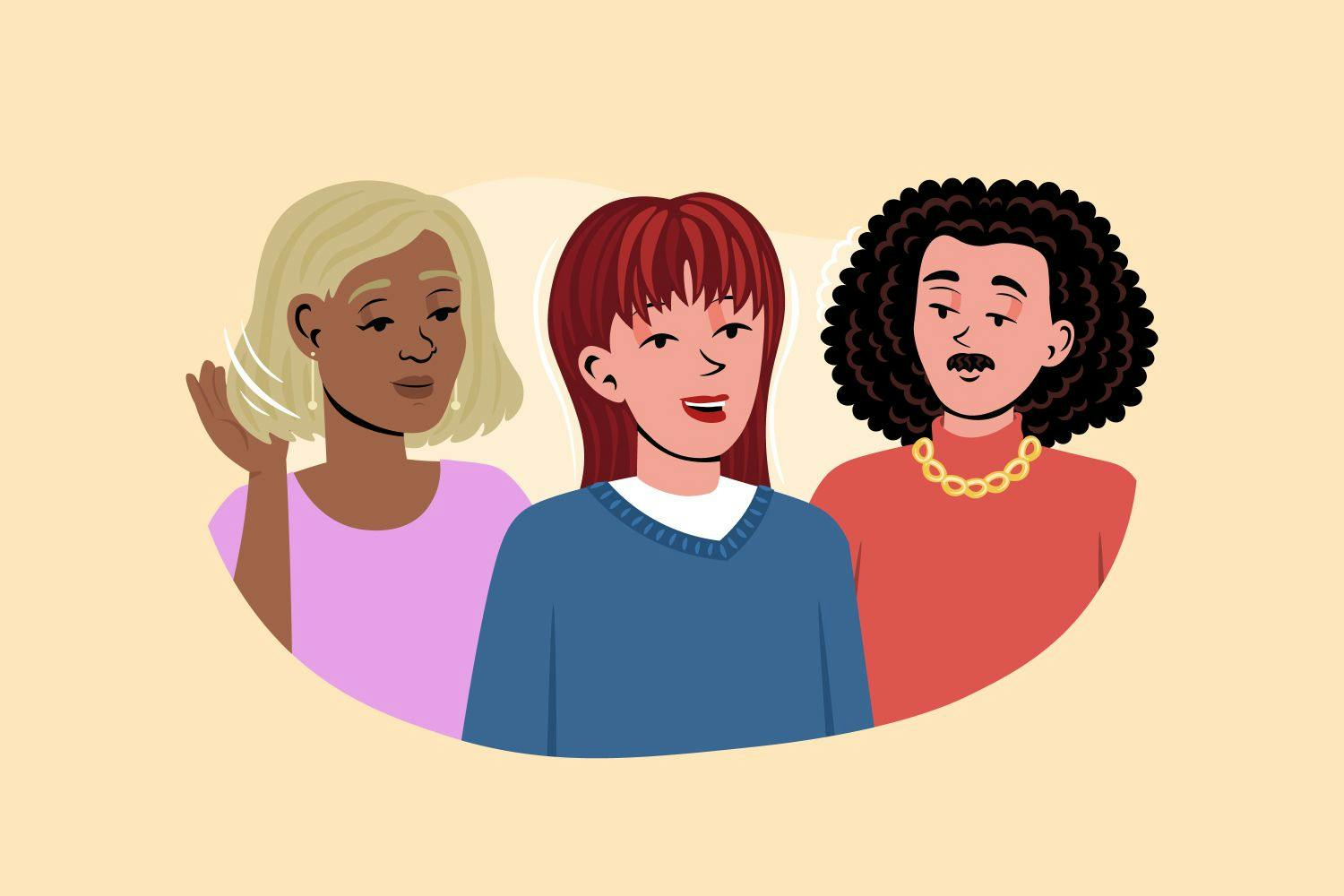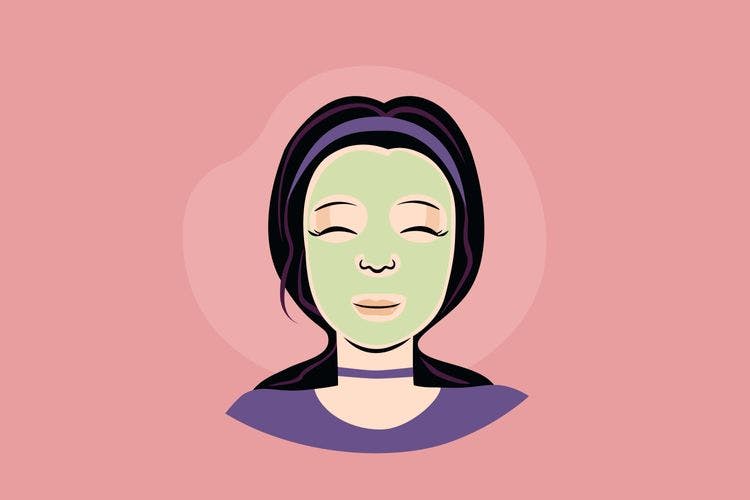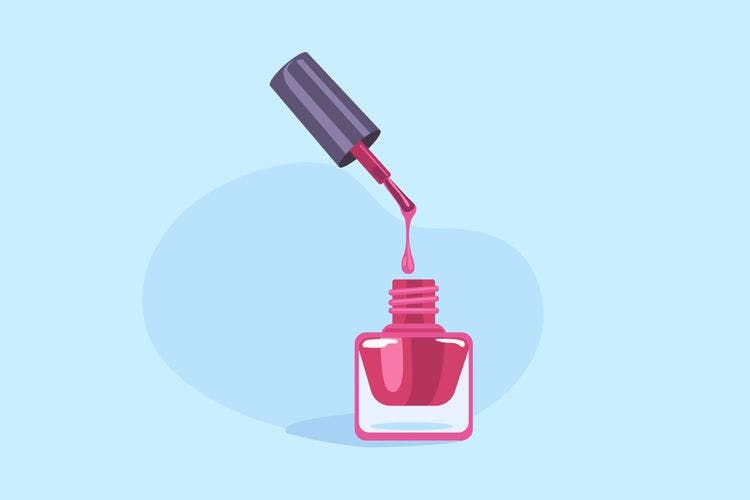Types of Hairstyles in English To Get The One You Want


You will get a promo code with a discount for our app courses after reading this article.
Contents
How many times have you felt this itchy urge to cut your bangs or change your hairstyle after dramatic events? We know the deal because you are not alone in this. Everybody goes through phases in life when you want to drastically change your hairstyle or just brush up on the old beloved look. But what to do when this urge comes during your vacation time or a business trip in an English-speaking country, and you lack knowledge on how to describe hair, types of hairstyles, and women's haircuts names? Grin and bear this situation and just read this article. We've prepared all the necessary vocabulary so you can quickly come up with ways to describe hair and name a hairstyle you want in English. Let's get the ball rolling!
Types of Men's And Women's Hair
You will be stunned to know how many people can't really tell what type of hair they have. They are so used to cutting their hair in their favorite hair salon at the hairdresser they build trust with, so they don't even think about such things. But when you get your haircut or hairstyle abroad, knowing how to describe hair in English is necessary. There are different ways to describe hair, especially when it comes to the types of women's hair. So, here are all words that describe hair types in English you need to know.
By length:
- long hair
- short hair
- buzz cut
- ear length
- chin length
- shoulder length
- armpit length
- mid-back length
- tailbone length
By structure:
- straight hair
- curly hair
- kinky hair
- wavy hair
- coiled hair
By color:
- black hair, dark hair
- brunette
- blonde hair, light hair
- brown hair
- red hair/ginger
- grey hair, white hair
By thickness:
- thick hair, coarse hair
- thinning hair, fine hair
- medium hair
- receding hairline
- bald
By damage:
- natural (no dye, no chemicals applied)
- dyed
- unmanageable hair, unruly hair
- heat damaged hair
1
Women's Cuts and Hairstyle Names
Women's Haircuts Names to Ask for at a Salon
1. Pixie
A pixie haircut is the shortest type of haircut available, not counting the bold look. This English haircut suits women with different types of hair – from thick to fine, straight to curly. The pixie will add some texture and volume if you have thick hair. If you have fine hair, this haircut will help to add dimension and create the illusion of fullness you are looking for. Modern pixie hairstyles have so many variations that you can be sure you won't look exactly like someone else if you do it. Regardless of what people think, this type of hairstyle suits every face shape. You just need to pick the right length and decide on bangs. Round faces deserve pixies too!
2. Bob
Bob has been one of the most popular haircuts on the list for the longest time. Throughout time we've got different variations of this iconic haircut. The one that humanity won't forget for the longest time is a short bob from the 1920s. However, today, you can see all types of bob haircuts – starting from A-line bobs and finishing with shaggy and layered neck-length bobs. This hairstyle is pretty universal and suits different types of hair. However, owners of thick hair might need to thin out the hair a bit to make it airier. Otherwise, the cut might look too heavy and full on the ends of the hair. On the other hand, women love bob haircut because it's easy to manage and takes less time to dry. The only slight inconvenience about this haircut is that you must refresh it regularly to keep the right shape.
3. Shag
Do you remember the iconic Rachel haircut from the first seasons of Friends? Then you already know what the shag is. Basically, it's a layered haircut that lets to keep the desired hair length and add some volume and texture. Shag is perfect for people with thick, coarse, heavy, and straight hair. However, this haircut might not be the best option for fine hair owners because it creates the look of even thinner hair. This type of haircut can pull off only by women with a lot of hair. The best thing about shag is that it can be any length you want.
4. Butterfly haircut
The butterfly cut is the most trendy haircut out there right now. And the reason for that happening is TikTok. Girls from all over the world try to perform the cut at home just following the instructions from the videos of fellow TikTokers. Even though the butterfly cut might be seen as a unique solution, in reality, it's just a variation of the shag haircut. The significant difference is that, unlike shag, the butterfly cut implies that the longest layers fall just below the shoulders. Hairdressers say that anybody can try this cut. However, it is the best for wavy or curly hair because the layers are blended so well, creating styling low-maintenance.
5. Bangs
Yes, we know that bangs are not an independent hairstyle. However, it's a nice touch to any hairstyle. Nowadays, bangs have become extremely popular among those who have a thing for "old money" style. But to be completely fair, they've been in trend for a few seasons in a row. The cool thing about bangs is that they can compliment any haircut – pixie, bob, or shaggy. Another plus is that they suit any hair length, but most put together, they look short to medium hair. Hairdressers say that cutting bangs help to create a much younger look. Nonetheless, we won't recommend you to be impulsive ad follow this trend without carefully considering all pros and cons of this type of hairstyle. Why? Because bangs require a lot of attention and styling skills. You can't just wash and go when you have bangs – it will look crazy. To pull off bangs every time, you need to make time and learn how to style them the way you want so that in the nearest future, you wouldn't spend so much time on them every morning.
Hairstyles For Women
Now let's move to hairstyling which may seem difficult because there are so many options. However, the list of hairstyles is pretty limited. Hair professionals just like adding some details to existing hairstyles to make them more suitable to the time and fashion trends. Here is the list of hairstyles you need to know:
- natural wash-and-go
- glass straighten hair
- 90s blowout
- textured beach wave
- soft Hollywood wave
- glam curled hair
- sleek ponytail (high or low)
- claw clip updo
- bun (messy or spiky and sleek with a center part)
- classic braid
- French braid
- braids
- afro
- batu knots
- braided locks
Name a Hairstyle: How to Talk to a Hairdresser
Once you get to a hair salon or a barbershop, you need to talk to a hairdresser or barber to explain what you want to do to your hair. Lots of people complain that they thought they had explained everything so well but still ended up with not exactly what they wanted. And that happens in their native language. But we are here for you to prevent that from happening in English. Let's practice words describing hair, different names of hairstyles, and example sentences for a proper conversation at the hair salon.
An example of a conversation at the hair salon or barbershop
- Hi! Are you here for a haircut?
- Hi! Yes. I have a reservation at 3 pm with Kristen.
- What would you like to get done today? / What are you looking for today?
- I'd just like a trim, please.
- Sure, how much would you like to take off/cut off? About half an inch?
- That would be great. Could you use a trimmer/clipper instead of scissors, please?
- Of course, not a problem.
It's just an example of the conversation. However, you can give more specific directions if you know what you want; the professional is okay with that. For example, you can mention you would like a straight or oval-shaped trim. Layers are a thing that girls ask to do today because it adds texture and volume. If you are a man or aim for a shortcut, in addition to scissors, the hairdresser or barber will use a trimmer and a razor to clean up the edges. In that case, you can actually emphasize how short you want your hair to be in a different part of your hair – sides, top, back, around the ear, and bangs. You can answer this question by naming the number of settings of the clipper to use at each part. For example, "Could you use number 2 on my sides?"
How to Learn Types of Hairstyles and Words Describing Hair with Promova
This article gave you a great overview of different ways to describe hair, types of hairstyles, and types of hair. But now you may start asking yourself how to learn those new words in English. Say no more! Our answer is Promova!
Promova is a one-stop language learning platform that covers the needs of different language learners. We created a fun, friendly, and welcoming environment with a personalized approach so you could achieve your language learning goals quickly. In addition, Promova offers various options to practice English at any proficiency level.
First, you can download the Promova app and learn English through English using cute flashcards with unique illustrations. Then, open our bite-sized lessons one by one following the guided experience or learn what you need now, for instance, words describing hair. We have several lessons about hair to complement your basic knowledge and make you boost your English vocabulary even more.
Second, you can enroll in one of our tutoring programs. At Promova, you can choose individual or group lessons with certified English teachers. All you need to do is to pass a test to determine your proficiency level and get a free trial lesson. During the first meeting, the native-level professional will help you to set your goals, define the field of work and create a personalized learning plan.
Third, you can get even more speaking practice by attending the meetings of the free Conversational Club. If your English level is B1 or beyond, you can book a spot for a Saturday to discuss a trending topic with fellow learners from all around the world. We work in small groups of up to 5 people, so you will definitely have time to demonstrate your speaking skills. And if you would like to compliment someone's hair during a lesson, feel free to use some words describing hair from this article.
Conclusion
After reading this article, you shouldn't have problems describing hair types in English. Hopefully, going to a hair salon or barber shop in an English-speaking country won't make you worry about the results from now on. You know enough ways to describe hair, hairstyle names, and types of men's and women's hair to feel confident talking to a hairdresser, hairstylist, or barber. So wear your haircut and hairstyle proudly every day!
Use your discount and learn languages with Promova
Start learningFAQ
What is the difference between a hairdresser, hairstylist, and hair colorist?
Hairdressers, hairstylists, and hair colorists have different fields of responsibilities when it comes to hair. At first glance, it may seem extra to have three terms, aka three different professionals who take care of the hair. However, when any professional specializes just in a particular area of work and doesn't spread out, that makes them a better worker. The same applies to hair. So, let's break down who is who in the hair salon.
Let's start with a hairdresser. A hairdresser is a hair professional in charge of haircuts of any difficulty. They prepare the hair to get cut by washing it. A hairdresser also is a professional who applies chemical treatments and adds hair extensions. They have to take special courses to know how to make different hairstyles and learn to work with chemicals.
Then we have a hairstylist. They do what exactly lies in the name of their profession – style the hair. Hairstylists can create Hollywood waves, bouncy curls, insane volume, and many more just with the hair you have, they won't cut it. That is why they are not required to go to courses and get any license for work. Sometimes, the hairdresser and hairstylist can be the same person at the hair salon.
And last but not least goes the hair colorist. It's a professional who works on coloring hair. This person knows the technicalities of hair color, depth, and tone. They work with various techniques, including permanent, semi-permanent, and highlighting. A good colorist has to combine an artistic sense and chemistry knowledge. One wrong mixture, and the client can lose all the hair.
Why is it called a barber shop?
This term comes from the Latin language. The word "barber" originated from the word "barba," which means "beard." That is why barbershops are only for those who identify as men. In such a salon, men can get a haircut and trim their beards and mustaches. It is also worth mentioning that it wasn't always called a "barbershop." In the 1500s people called the place "barbery." And overall, the history of barbershops goes back over 6000 years. People who work in barbershops are known as barbers. However, being a man is not a requirement to be a barber. Women can also get this profession.
How to explain how I want to dye my hair?
The best way to explain to your hair colorist how you want to dye your hair is show and tell. By that, we mean that you need to find references – the photos with the look you want to achieve. However, you need to pick the reference carefully considering if the model has the same hair as you – structure, fullness, and length. Also, don't forget that what might look good on a person with one face shape and skin color might not be for you. So, don't feel intimidated to ask for professional advice. Also, before going to a hair stylist, learn some hair color lingo such as toning, bleaching, highlights, balayage, ombré, sombré, color melt, single process, retouch, and glaze. Nevertheless, remember that hair colorists can't copy and paste what they see in the picture, so be ready that your hair dye might differ a bit.
How to choose hair products with labels in English?
Reading the hair product labels in English might be tricky. You won't always know all the ingredients in those shampoos and conditioners. But you should pay attention to important things marked on the bottle. Usually, brands state the type of hair the product is meant for – all hair types, dry, colored, thick, weak, curly, and wavy. Then, they also describe what to expect from using the product – volume, strength, hydration, nourishing, anti-frizz, anti-yellow, etc. And, of course, pay attention to the product type– shampoo, conditioner, mask, treatment, serum, etc.


Comments